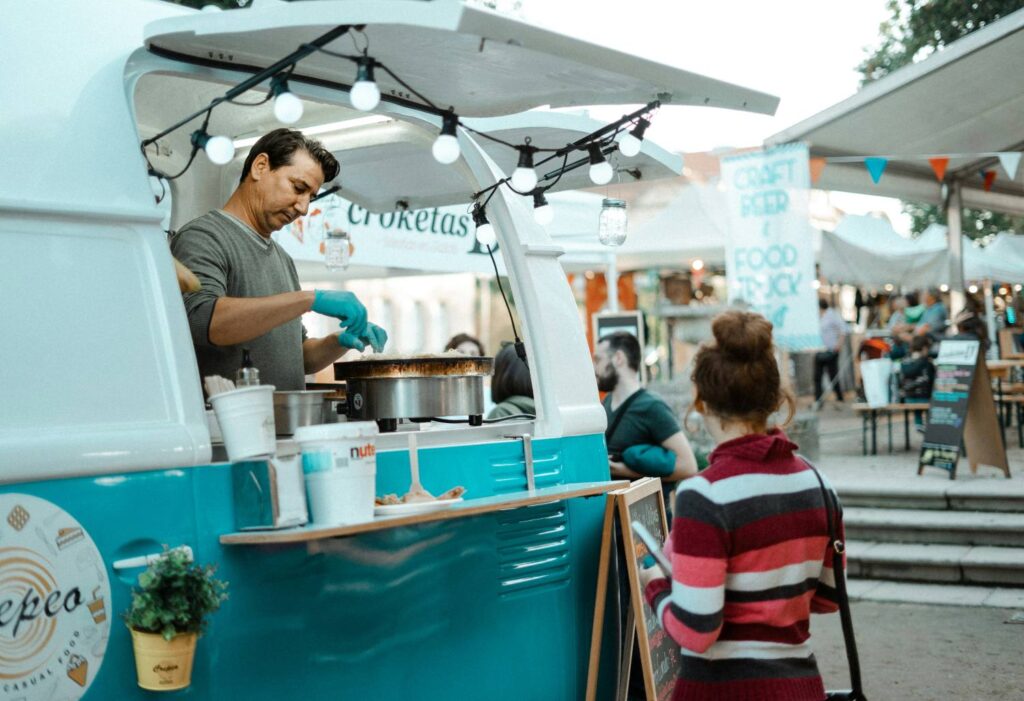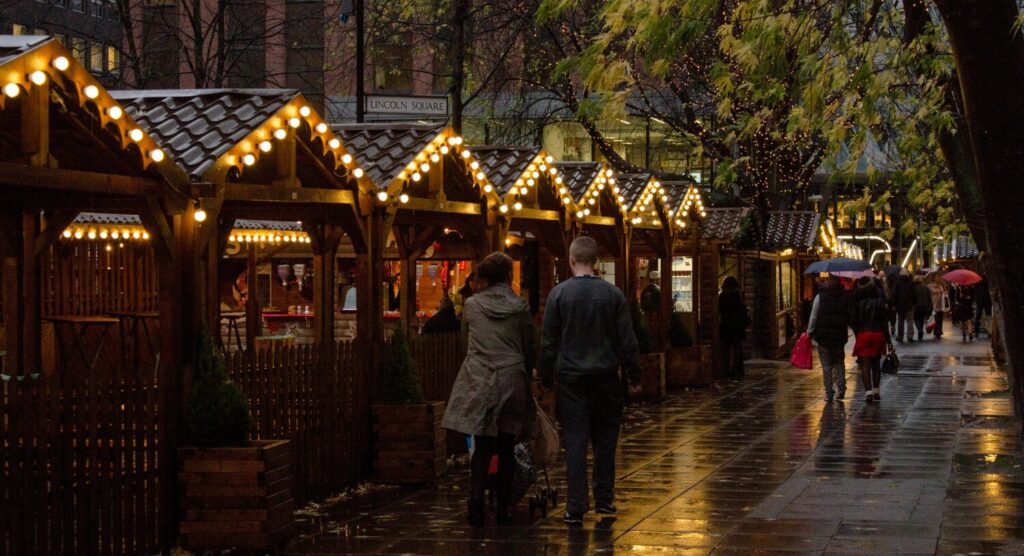Advice on Risk Management for Stall holders

All stall holders should take responsibility for their own risk management. But that doesn’t mean that as an event planner, you can wash your hands of the task. It’s important that you have a general overview of what risk assessments have taken place and how risks are managed.
Our advice would be to ask all stall holders at your event to complete a risk assessment – You can download our example risk assessment here.
In this article, we’ll go through a few areas of risk that we think your assessment should include, and explore what types of checks and risk management solutions your stall holders could put in place.
INJURY
If the stall has workers who are required to move around and carry large items, your risk assessment should ensure that they’re not risking injury.
MANUAL HANDLING: An easy way for stall holders to become injured is from manual handling. If staff are picking up large objects in an incorrect fashion they risk causing damage to their neck, back or levers. Any staff required to carry objects should have appropriate training to do so, but you can further limit risks by providing trolleys or implementing a ‘two person per object’ rule.
TRIPS, SLIPS AND FALLS: Stall holders should note all wires and any floor-level equipment that they plan to use. They should then have a system which prevents those objects becoming a trip hazard. This could include specifying certain walkways through the stall, or using tape to cover any loose wires. Stall holders should also set a time limit on the clean-up of any spillages.

WEATHER
This section won’t be relevant to you if your event is inside. But stall holders for fun days and fayres should be aware of the dangers that high winds or storms could cause.
ADVERSE WEATHER: Any loose items should be tied down. Any electrical items should be covered. But adverse weather for some stall holders doesn’t necessarily mean rain, high winds or storms. For instance, if a stall involves a fire display (e.g barbeque), a summer heatwave with a gentle breeze could be just as hazardous. In those circumstances, guards should be placed around the fire to prevent sparks or flames escaping.
EQUIPMENT
For any risk assessment, your stall holders should make a list of all the equipment they plan to use.
ELECTRICAL SHOCK: All portable equipment should be subject to PAT and display evidence as such. All equipment should have a history of regular checks and inspections and have been signed off by a professional to have been in perfect working order.
TRAPPED OR CRUSHED BY MOVING VEHICLES: Trapping or crushing by moving vehicles is more common than we’d like it to be. If your stall holders are using vehicles to set up their stall or move stock around, they should put measures in place to make sure that their path is clear. This could include a drivers ‘mate’ to clear the way for the driver, and a clear warning sound when the vehicle is reversing.
FLAMMABLE LIQUIDS: Some event owners will take the blanket approach of banning all flammable liquids from their event, but we know that’s not plausible for everyone. If stallholders need flammable liquid, you should ask them to prove that they’re carried in appropriate containers and they’re under supervision at all times.
HAZARDOUS SUBSTANCE: Much like flammable liquids, stall holders should have a valid reason why they’re absolutely necessary. They should prove that they’re in suitable containers and under supervision at all times.

SET UP
An area of risk management that people often forget about is the stall itself and the way it’s set up. It’s important that space is utilised effectively and safely.
COLLAPSE OF STALL: If stall holders are setting up their own stall, they should supply plans prior to the event, detailing how they will create safe walkways and spread items out so they’re not creating trip or crush hazards. At this stage, it may be appropriate for you to hire a risk management professional to check these plans.
RESTRICTED SPACE: If space is restricted, limits should be placed on how much stock or equipment is allowed on the stall at any one time.
FALLING OBJECTS: If items are stored on a shelf or high up, the stallholders need to evidence that the items are properly secured. This also applies to the shelves themselves. On that note, if your stallholder is using a stepladder to reach shelved equipment, the ladder should be properly maintained and the person trained in its use.
SHARP EDGES AND PROTRUDING OBJECTS: Stallholders should identify where there is possibility for sharp edges or protruding objects and put in place suitable covers. This task should be completed whether or not the stallholder believes them to be dangerous.
Speak to your stallholder
We’ve written the above list as a starting point, and it’s in no way designed to be exhaustive. It’s up to you to make sure that all stallholders are given an extensive risk assessment and are carrying out the correct risk management.
Barry Nicol, of Insure Our Event’s risk management partners, Stallard Kane, explained why it’s so important to communicate with stallholders:
“When I am on site setting up, or during the event, I rarely ever see anyone checking that we are working safely and that the details supplied match up with our actual activities. I would recommend that event organisers aim to take the time to meet the stall holders when they are setting up and then to also do a walk around check once all are set up and at regular points during the week event. This way they can be more dynamic and respond to points as they crop up during the day.”
Insure Our Event can help with that. We’re experts in preventing claims at events.
Read our information for stall holders today to find out how we can help you save money and give you back more time to create a brilliant event.
Market Stall and Stall holders insurance
Alternatively, fill out our quote form for a free quote on a fully tailored insurance policy.


